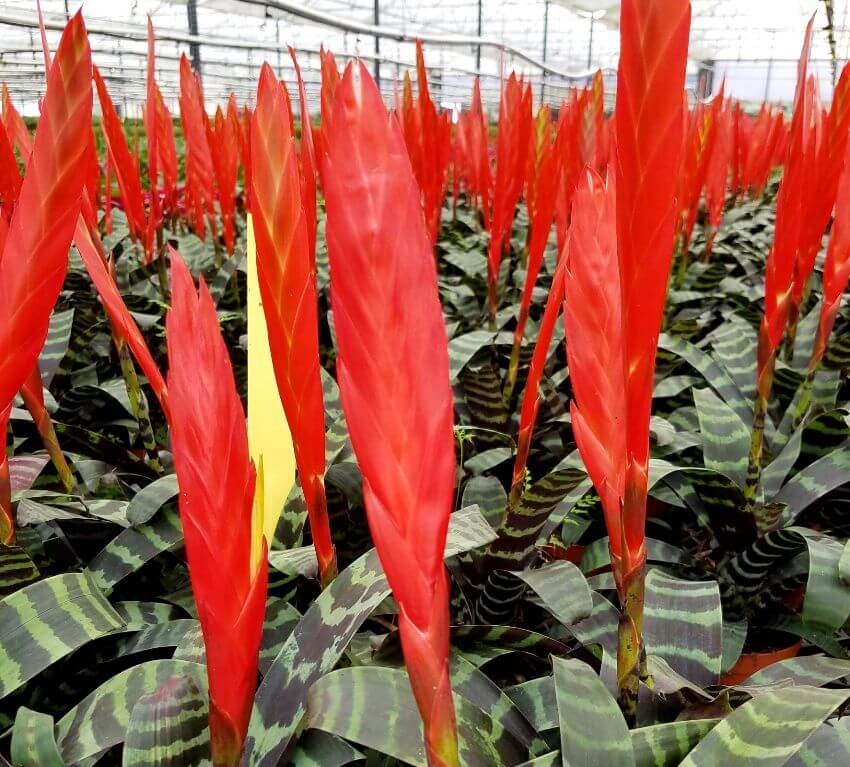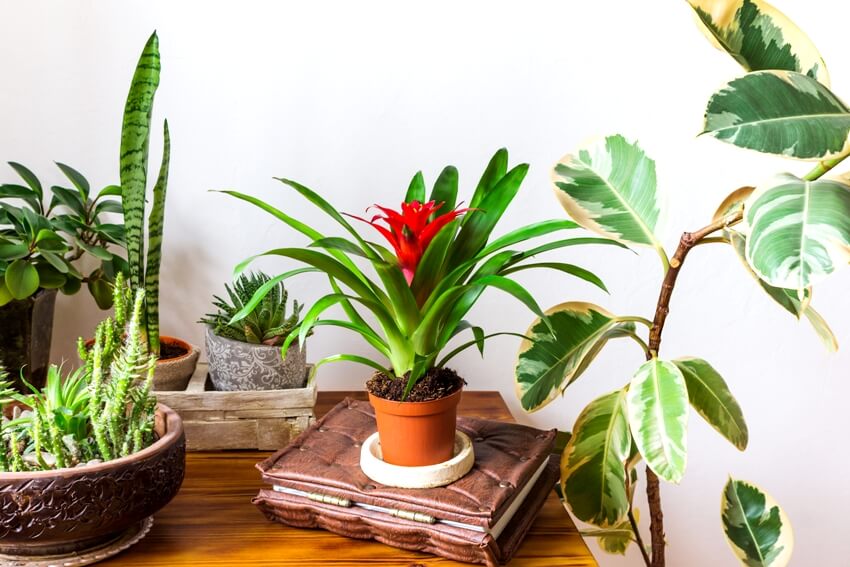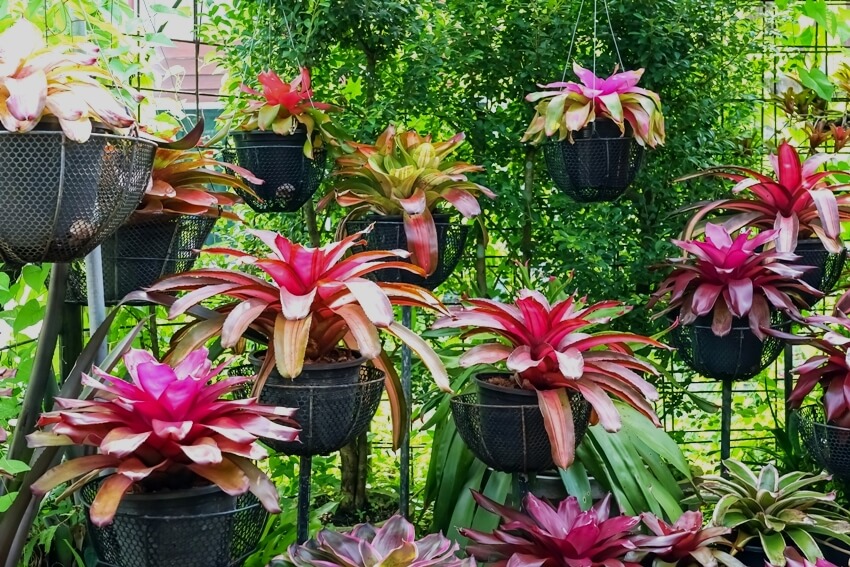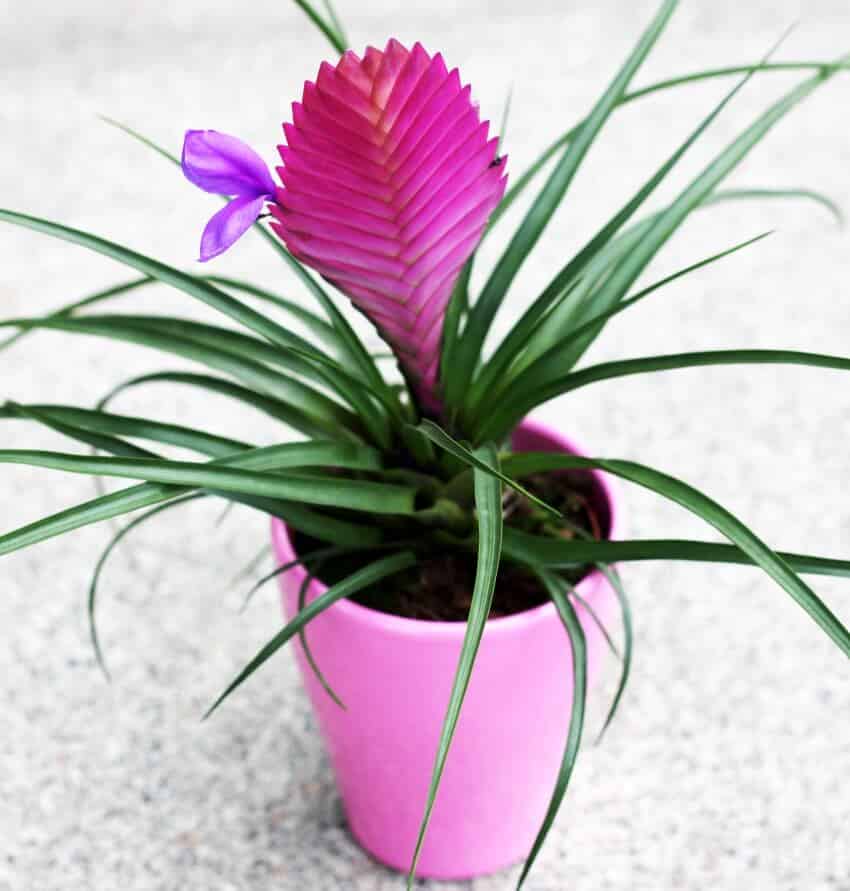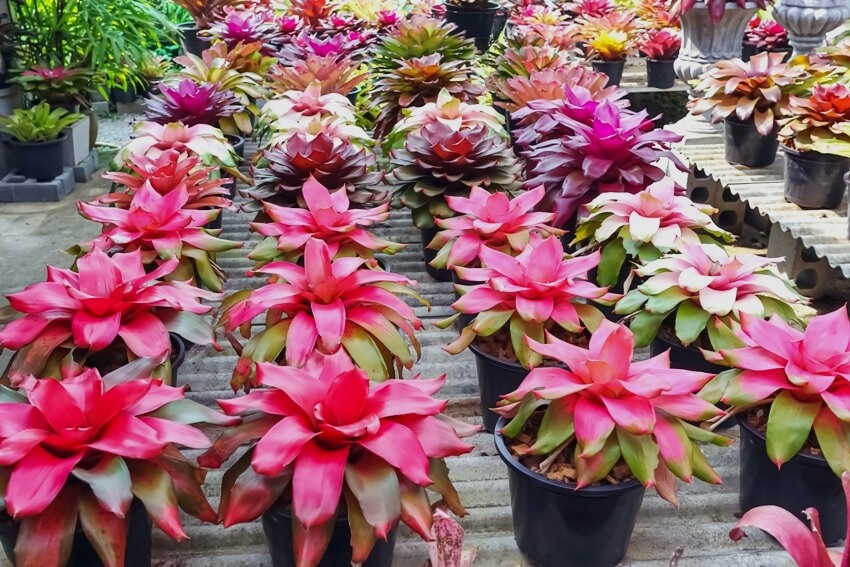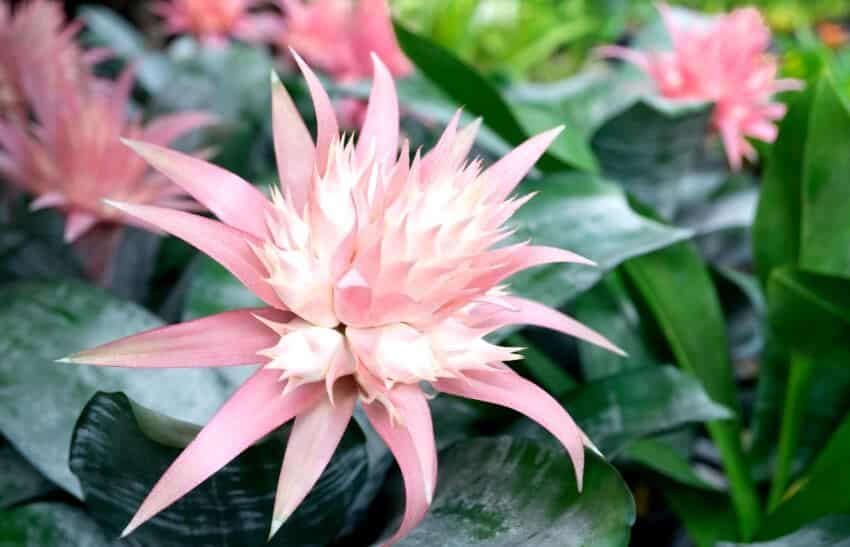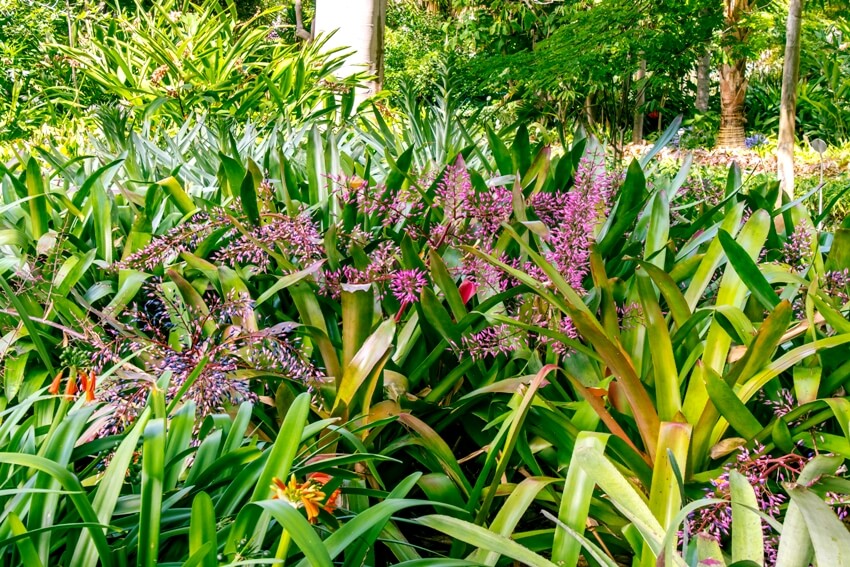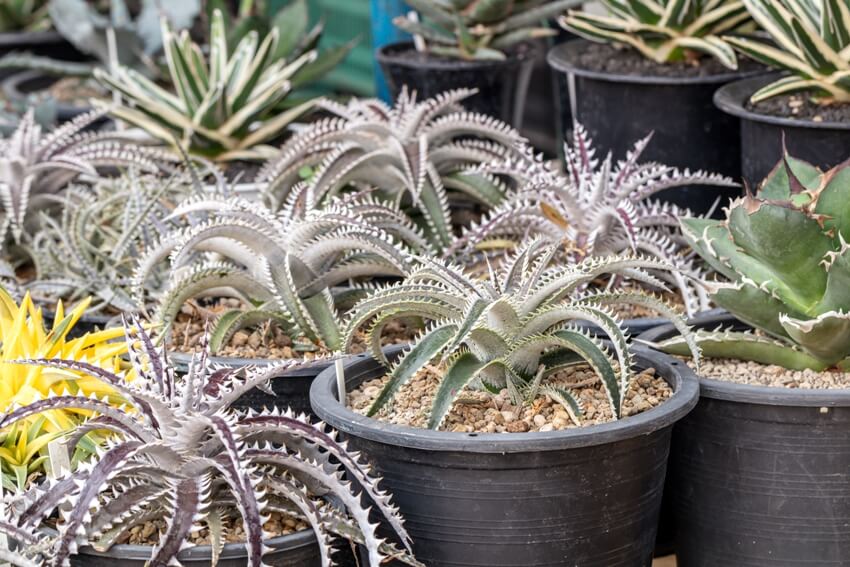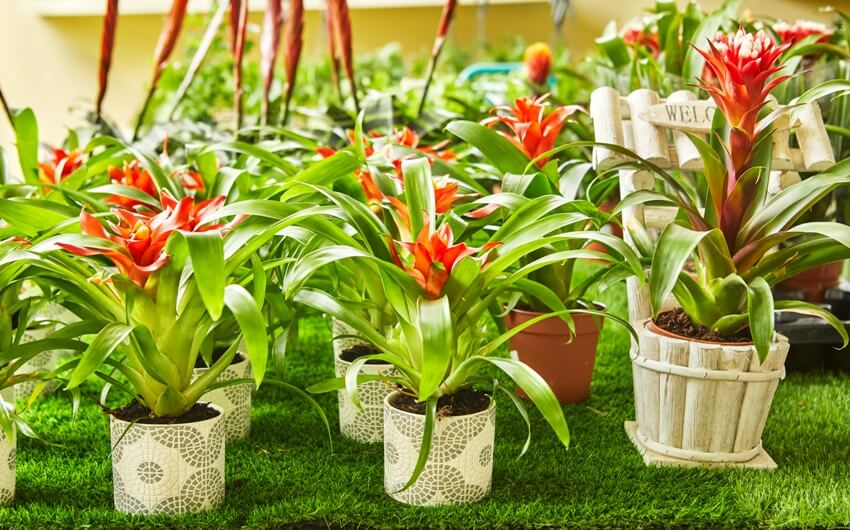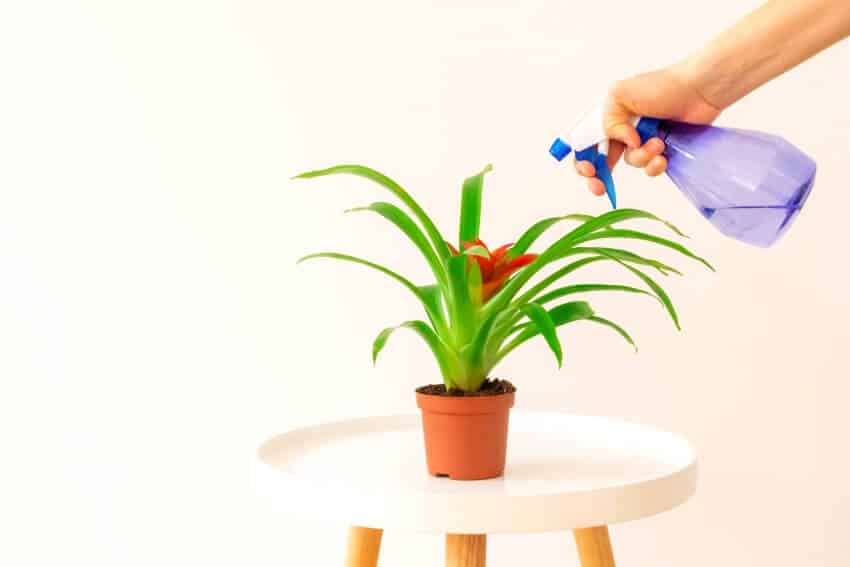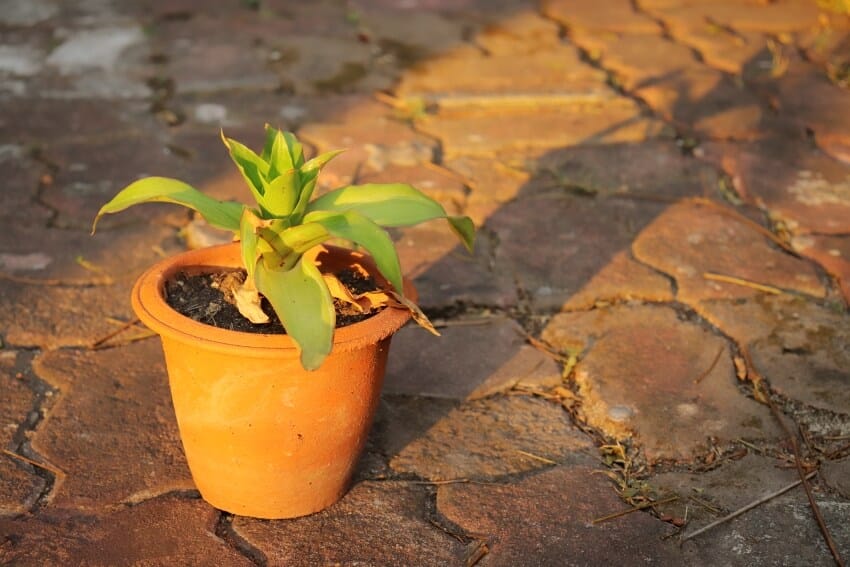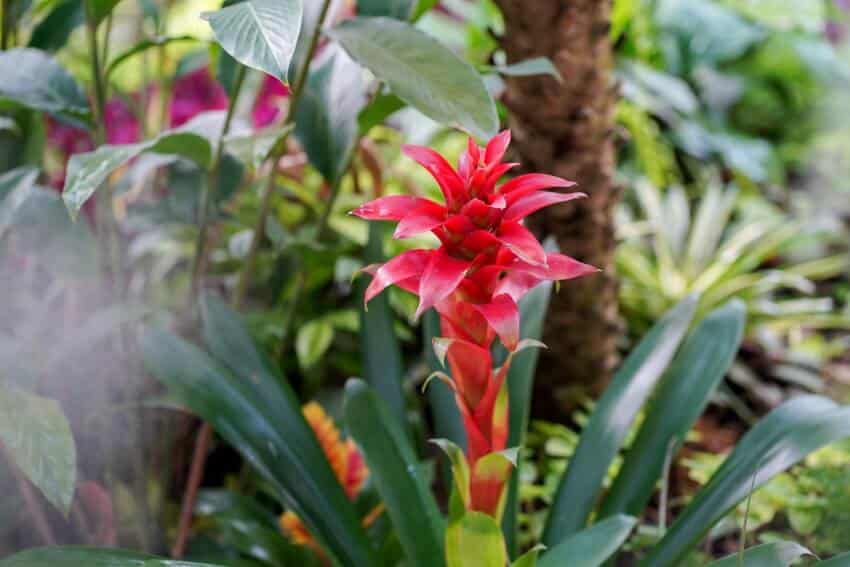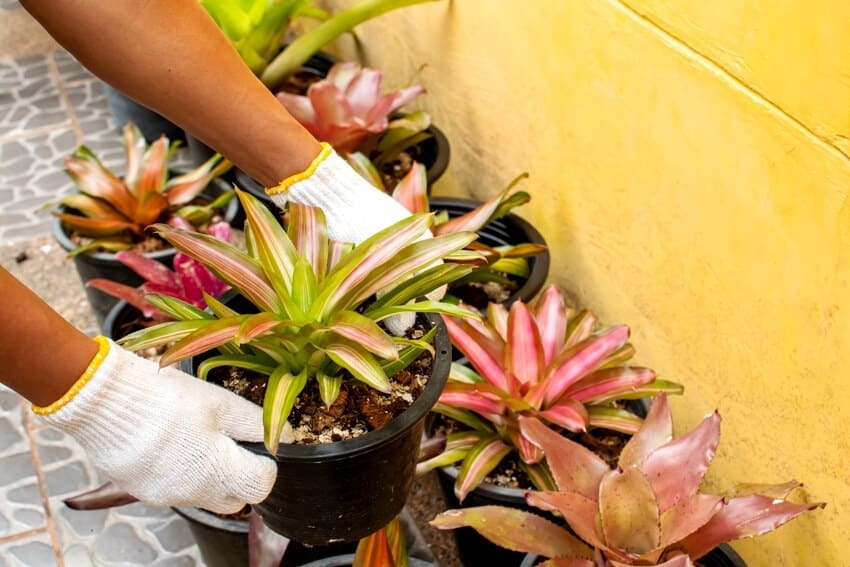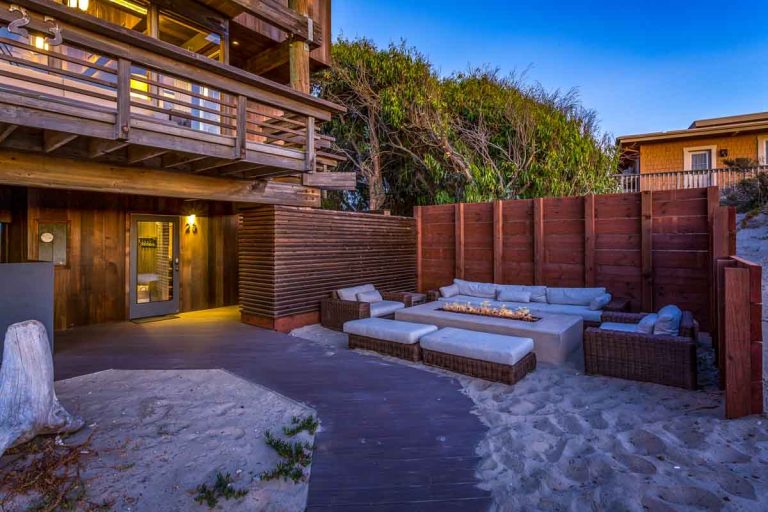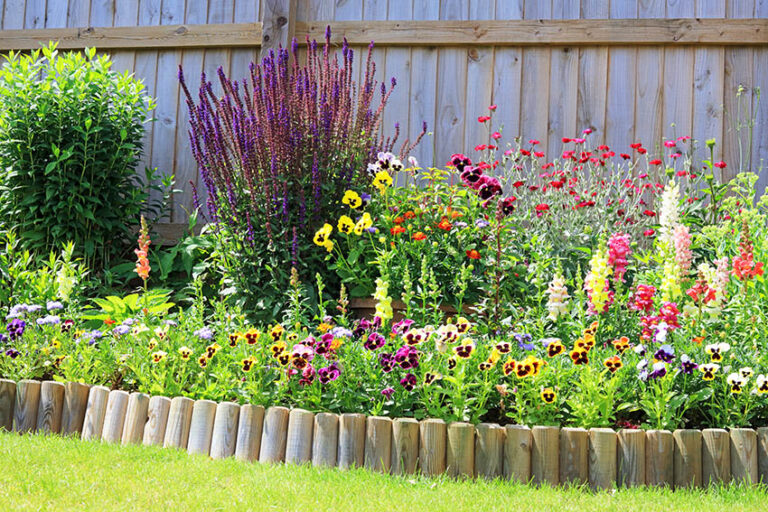Types of Bromeliads (Varieties, Growing & Care Guide)
In this guide we share the types of bromeliads including different varieties, care tips, watering, how to propagate and bromeliad growing ideas.
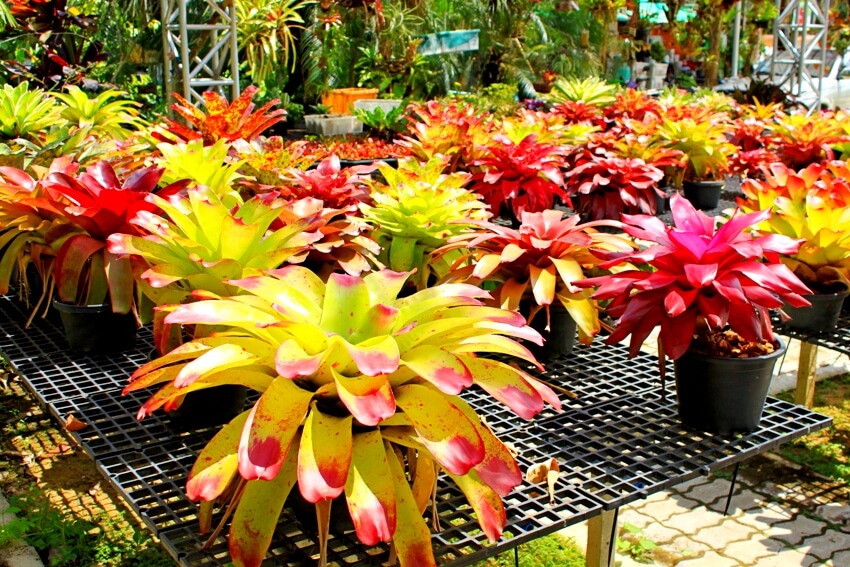
If you’ve ever been to a supermarket, chances are you’ve run into a bromeliad or two whilst passing by the floral department. That’s because bromeliads have earned their place there: they’re bright and colorful, exotic, and easy to care for.
The fact that bromeliads have taken the houseplant market by storm is not surprising in the least, but their long-lasting blooms and radiant foliage are what really appeal the most to plant lovers. They look great in almost any location, and add a touch of mystery to a room.
While their appearance drives their sales and puts them in the homes of many a plant person, bromeliads aren’t all alike. There are many different species that make up the bromeliad genus, and while there are thousands of different species in the wild, a large percentage of those types have been grown and bred to live happily inside your average home.
Of the availability of houseplants, bromeliads offer one of the widest selections of different varieties of any type of houseplant. Though they may not all be available at your local big box store, many of them can be found from private growers and sustainable farmers. Let’s take a look at exactly what we’re most likely to find on the bromeliad market.[toc]
Flaming Sword
The flaming sword or Vriesea isn’t named as such solely because of its vivid red stalk; the tough leaves of this bromeliad are sharp! The red stalk of this species announces itself when the plant is in bloom. This stalk can last for months if properly cared for, and can even bloom for up to a year in the most ideal environments.
The flaming sword is a popular plant that produces oxygen, making it an excellent addition to a bedroom. It is characterized by its bright colors and patterned leaves with flat flowering spikes.
While the red sword lives up to its name, the leaves on this species are incredible; they feature a striped brown and green pattern that glow bright green in the sunlight. Some specimens can even have dark spotting in the lighter green areas. Check out the most popular red indoor plants here.
Guzmania
This species arrives in an array of different colors, all neon shades and bright hues. From hot pink to neon lemon yellow, this bromeliad can be found in almost any shade you’re looking for.
Their easy care routines make them perfect for most households or well-lit offices, but be sure that they get enough light to maintain their color and to prevent the leaves from growing thin and narrow.
A happy Guzmania will look like it did on the day you brought it home. Guzmanias don’t like their feet too wet, so avoid using a planter that doesn’t have any drainage holes in the bottom.
Neoregelia
This lovely bromeliad is a bit unlike the others. Instead of a bright plume or stalk in their centers, neoregelias display washed shades of magenta-red just inside their centers, which quite often look like paint has spilled on them in the one spot.
Despite their lack of a tall, vibrant stalk, neoregelia brings its own aesthetic to the show. This species will put on an array of small and dainty flowers when in bloom, just after its center color comes on. This is a great option for those who love the exotic shape of bromeliads but not the showy neons.
Tillandsia
Most might be surprised to learn that Tillandsia air plants, such as those found in home and garden stores, are actually bromeliads themselves.
While they don’t require any soil, these little guys are covered in countless tiny hairs that are meant to absorb water and nutrients from the air around them.
Native to humid, tropical climates, this plant needs a little extra care to thrive. While some air plants are considered beginner plants, it does take some time and practice to get their care routines just right. If you have the time to give them a spritz every single day, then this one is for you.
These types of plants have leaves that somewhat resemble spider plants. Another type of bromeliad that resemble spider plants is the petite bromeliad.
Medusa
Similarly to the neoregelia, medusa is a bromeliad that prefers to color its leaves rather than show off a big, elegant flower stalk. When medusa goes into bloom, its top 20-30% of leaves turn from green to a deep reddish-orange hue, with hints of pink at the very tips.
This transformation happens quickly, within a matter of weeks; once the plant is in bloom, it begins to prepare for the making of its pups, or the offspring that grow from the base of the plant.
As this process continues, the medusa slowly loses its elegant color and shrinks, but its unique shape with tendril-like leaves remain interesting until the very end!
Aechmea
One of the most popular bromeliad species for serious indoor gardeners, aechmea is a species that looks like no other. It bears wide, thick and dusty green leaves that grow to about 12 inches long on average.
In the center of the plant, during blooming time, is a delicate pink rosette that slowly grows and opens over the course of months.
Worth the wait, this plant looks both stylish and sophisticated in any setting. The only catch is that aechmea needs plenty of natural sunlight to bloom, so it’s best in houses and offices that have several or large windows with plenty of sun pouring in for multiple hours a day.
Portea
Portea is the colossal giant of the bromeliad genus. Its leaves can grow to as long as 2 feet, and its flower stalk can get as tall as 4 feet. The nature of this spiky bromeliad is to grow both out and up, so its foliage always stands in a perfect palm-like tower.
The spike of this unique species itself has a brightly colored stalk, with gorgeous violet flowers at the top. Portea can stay in bloom for months with enough water and sunlight, and can get quite large before they bloom, making them a great floor plant for well-lit spaces.
Dyckia
At first glace, dyckia appears to be a gangly bunch of dusty gray tendrils. Upon closer inspection, though, you’ll notice that each leaf is edged with long spines, curled under themselves, much like their air plant counterparts.
This species doesn’t require as much water as typical bromeliads, but it does require soil, unlike tillandsia air plants. It likes medium to bright light for most of the day, but will settle for less during the winter months. Dyckia is a smaller plant overall, perfect for limited space where a little spunk is still needed.
How To Care For Bromeliads
Most bromeliads require the same general parameters to grow and stay healthy. Typically, they prefer medium to bright light, several hours a day, or “full sun”. While some will grow happily in window sills, it’s best to opt for filtered light.
To do this, simply place the plant somewhere near a bright window but not directly in it, or choose some sheer curtains for windows where plants are located.
By offering bromeliads filtered light, they still receive all the light they need, without any damage to their leaves from the direct rays. Remember, they live in tropical climates, where they are typically shaded by taller trees.
Fertilizing bromeliads looks a bit different than fertilizing other houseplants. Instead of applying fertilizer to the soil, bromeliads need their fertilizer applied directly to their crowns, where they absorb the most nutrients.
In other plants, root systems are responsible for soaking up nutrients; however, bromeliad roots only anchor the plant to hang onto trees or other natural textures.
That being said, make sure you use a fertilizer specifically for bromeliads; if you can’t find one, a fertilizer mixed for air plants or orchids will do!
How To Water Bromeliads In Pots
While this whimsical plants are more accustomed to growing on a mossy tree branch, they will take to a pot with soil as a substitute. However, bromeliads prefer their containers to be tight and cozy; too big of a container will allow excess water to sit and rot the roots.
Another great way to prevent this is by watering only at the center of the plant. By pouring water into the reservoir, you are helping to simulate the tropical rainforests that these plants hail from, making them feel more at home.
Additionally, it’s important to frequently mist the outside leaves of your bromeliad, no matter its species. While air plants don’t need soil, they do need frequent misting and fertilizing. Other bromeliads enjoy the same treatment.
Misting creates humidity for them, which encourages blooming and new growth. Just be sure to halt any misting of leaves if any part of your bromeliad begins to rot; this is an indication that it’s being watered too much.
Can Bromeliads Go Outside?
If you live in a tropical or subtropical climate with high humidity and no frost, your bromeliads would be happy to go outside! Just be sure not to allow them to sit in full sun all day, which strains their growth and causes sunburn.
Avoid placing bromeliads on hot surfaces such as concrete or stone tile in full sun, just the same as any other outdoor plant. When the winter temperatures plummet below 45 degrees, it’s time to bring them inside.
On the other hand, if you live in a colder climate, it’s best to avoid placing them outside unless you’re taking them out to repot. Even if outdoor temperatures reach into the 60s, bromeliads can be shocked when moving from a warm indoor window to outdoors in a cool breeze.
Instead, you can try placing them in an enclosed patio or even near an open window for a few hours a day. Make sure the bromeliad is never exposed to frost or cold temperatures, and it’ll be happy. Visit our guide to indoor plants that like direct sunlight here.
Do Bromeliads Like Full Sun?
If full sun is brought into question in the case of bromeliads, the answer is both yes and no. Full sun is considered 8 hours per day of bright, direct sunlight. While some bromeliads may tolerate this, most of the species found in stores will not.
While they do like to have 8 hours of light, it certainly shouldn’t be bright, unfiltered sunlight. In nature, bromeliads grow high up in trees that provide lots of shade; they soak up any sun that slips through.
By allowing bromeliads to have unfiltered sunlight, they can be exposed to too much, leaving them with unsightly burns and blotches that don’t recover.
Do Bromeliads Rebloom?
This is one plant that only goes through its blooming cycle one time in its life. After that, the plant slowly dies. While this might seem sad, the blooming stage can last for months on end, offering a long period of brightly colored stalks.
Once the bloom has finished, you can cut the stalk off to prolong the life of the plant, but only to an extent; this will allow it to budget more energy towards reproducing, or making the pups that grow out from their bases after their bloom is over.
All in all, a bromeliad can last anywhere from 1-5 years, depending on how long the blooming process takes once it’s begun.
How To Propagate Bromeliads
This is the fun part! After blooming, bromeliads begin to put out tiny clones of themselves, or “pups”, at the base of their stems. These babies take weeks to several months to grow, and should be removed once they reach about ⅓ of the size of the mother plant they’re attached to. Even better is that when your bromeliads dies, you end up with several more of the same one!
To remove the pups, use a sterile, sharp blade to cut the pups at an angle into the stem of the mother plant, making sure not to injure the pup at all. Then, place them in shallow, clean water for a few days to start the plant’s roots.
Once a small root system has developed, place them in pots just big enough to house the roots with a tiny bit of extra room to grow out and down. Then, watch them grow and bloom in their own time.
Are Bromeliads Toxic To Cats?
While taking a bite out of your bromeliad won’t be fatal to cats, they may certainly cause an upset stomach. This is primarily because cats are not accustomed to digesting bromelain, the active enzyme in bromeliads.
So, while your cat may experience a day or two of nausea or changes in their potty routines, the symptoms should pass soon after the enzyme has left their systems.
Of course, if any ill effects persist for more than a few days, consult your veterinarian to determine if your cat may be allergic.
See our article of houseplants that are safe for cats for more ideas.

